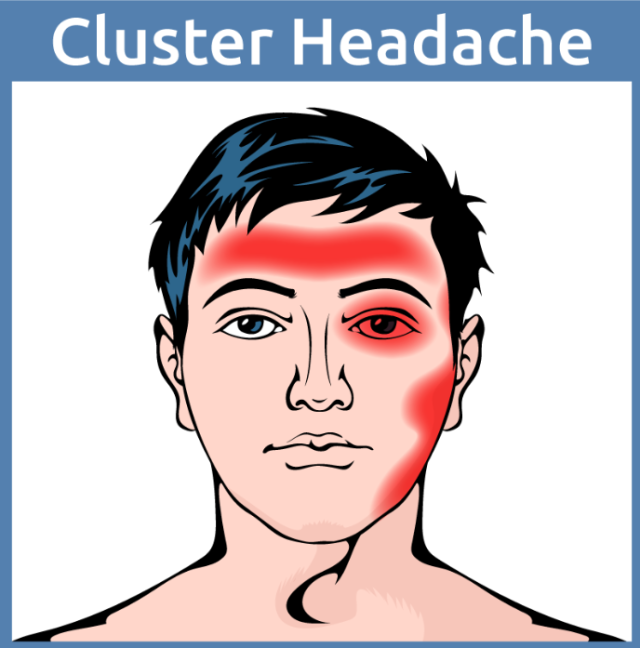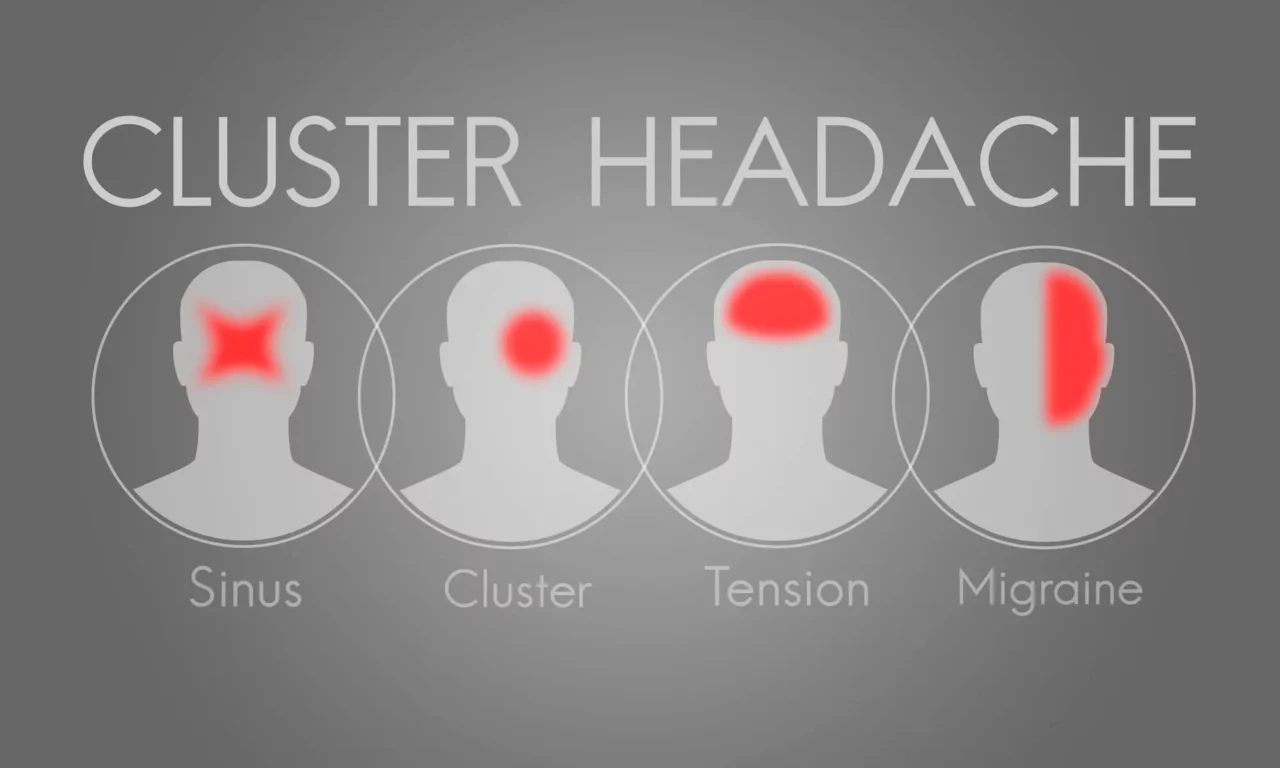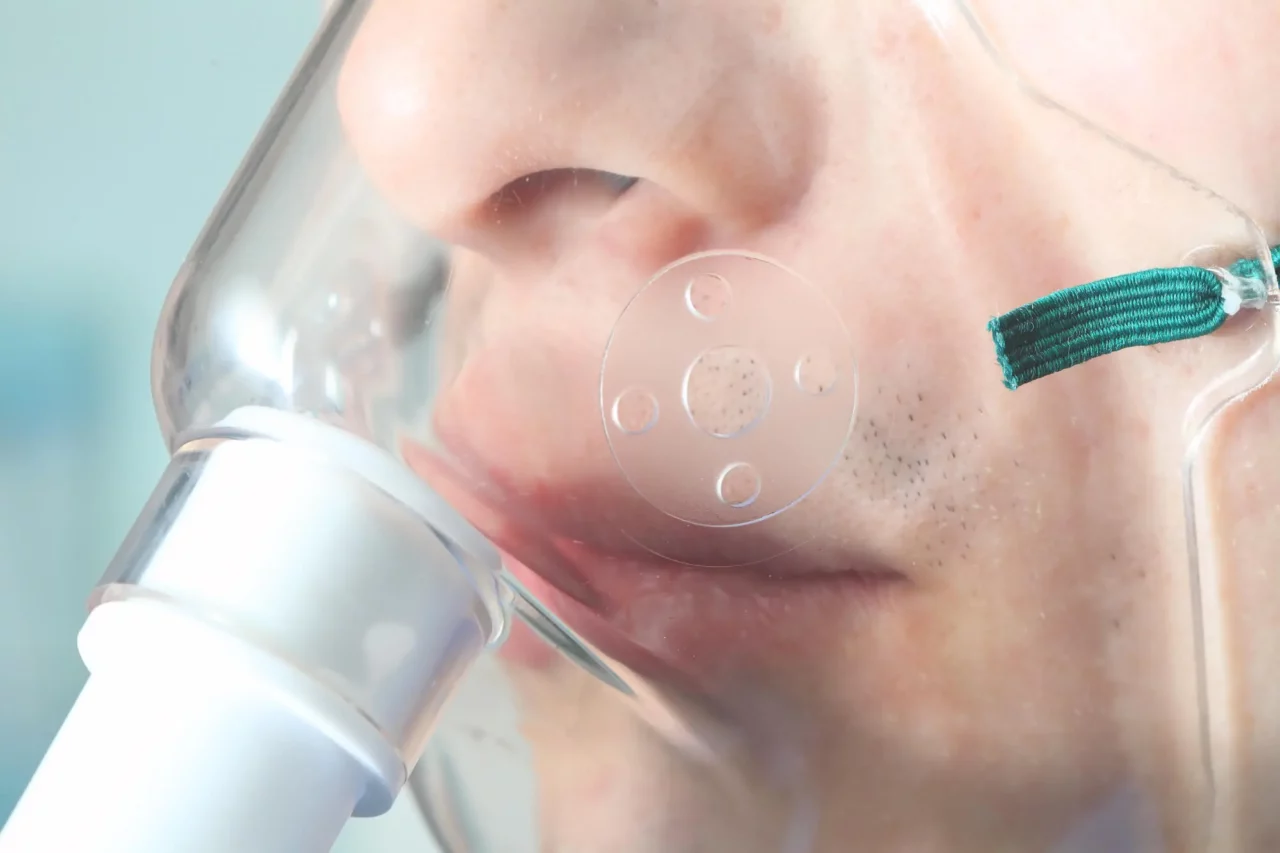Chronic headaches affect over half of the global population, and each type has a unique impact on a person’s life. Among these, cluster headaches are some of the most painful head conditions known today. Cluster headache, also known as a “suicide headache” or “histamine headache,” is a type of trigeminal autonomic cephalalgia that affects around 0.1% of the population.
While rare, this condition can be excruciating and life-limiting. Patients battling cluster headaches often rely on pain medications and corticosteroids or oxygen therapy to manage acute attacks.
While there is still much to learn about this condition, alternative treatment options are available that allow patients to ease their pain and regain control over their lives. Below, we’ll explore how NextPain Care’s multidisciplinary team develops personalized treatment plans to help ease cluster headaches.
Episodic Cluster Headache
A cluster period can last between 2 weeks and 3 months. During this time, you may experience headaches every other day or up to eight times a day. You have episodic cluster headaches if you have pain-free periods lasting at least three months. Many people with episodic cluster headaches have seasonal patterns, with clusters triggered by temperature changes in spring or autumn.
Chronic Cluster Headache
If you don’t experience any breaks between clusters, or if the periods of remission are shorter than three months, your condition is categorized as chronic. Chronic cluster headaches affect two out of 10 people with cluster headaches and can be severely debilitating.
Identifying Symptoms Linked To Severe Headaches
Cluster headaches are rarer but more severe than migraines. Many patients experience multiple types of head pain. Cluster headaches reach full intensity within minutes, leading to excruciating pain that often affects one side of the head.
Cluster headaches can affect your life for weeks or months at a time and tend to recur at the same time each day. Nighttime headaches are often more severe than those experienced during the day, leading to sleep disturbances and sleep deprivation.
This pain and lack of sleep can prevent you from being productive at work and can lead to inhibited concentration and restlessness.
Below, we’ll look at the telltale signs that you may have cluster headaches.
Tip: If your symptoms last for 2 days or more, and you experience abnormal symptoms like shortness of breath, nosebleeds, vision loss, or high fever, seek emergency medical care immediately.
Pain On One Side Of The Head And Around the Eye
Because cluster headaches involve the trigeminal nerve, the pain is localized to one side of the face. The pain may shift from one side to the other in different attacks but rarely within the same attack.
You may also experience piercing and stabbing sensations accompanied by throbbing pain and pulsating veins, usually behind or around one eye. The pain reaches maximum intensity in as little as 5-10 minutes and can last up to 3 hours before decreasing suddenly.
Unlike migraines, which often lead you to rest in a dark and silent room, cluster headaches may make you restless and agitated. It’s not uncommon for a person with cluster headaches to rock back and forth while holding their head during an attack.
Nasal Congestion
People with cluster headaches may also experience temporary nasal congestion.
Although the relation between the two conditions isn’t clear, a 2013 study provides two possible explanations:
- Experiencing nasal congestion may be a sign that the headache is triggered by sinusitis rather than the other way around.
- During cluster headaches, the autonomic functions of the trigeminal nerve may be affected, leading to symptoms such as excessive sweating and nasal congestion.
Facial Sweating Or Flushing
Excessive sweating and flushing, usually localized to the forehead and cheeks, are common symptoms of cluster headaches. Studies from 1987 and 1988 concluded that this symptom is caused by the trigeminal nerve’s reduced ability to control autonomic functions, such as sweating and temperature control.
Droopy Eyelid Or Pupil Constriction
Droopy eyelids and pupil constriction are symptoms of a common comorbidity of cluster headaches—Horner’s syndrome.
This condition is present in 10% of those with cluster headaches and usually lasts only during the main headache attack. However, in severe cases of prolonged or chronic cluster headaches, damage to the pathways that connect the facial muscles to the brain may cause permanent Horner’s syndrome-like symptoms.
Nausea And Vomiting
Cluster headaches share similarities with other headache syndromes, such as migraines. Common migraine-like accompanying symptoms in people with cluster headaches include nausea and vomiting.
These symptoms, especially when accompanied by seizures, changes in vision and alertness, and drowsiness, may indicate that your condition requires immediate medical care.
Cognitive Impairment
Cognitive impairment refers to a decrease in cognitive abilities, including memory, language, problem-solving, and attention. While these impairments can signal serious conditions like dementia or Alzheimer's disease, they can also result from other medical...
Light And Sound Sensitivity
Sensitivity to light and sound can be a perplexing and uncomfortable condition, often leaving sufferers feeling out of control. It can make daily activities challenging, whether it's shopping under bright lights or attending a loud movie. This sensitivity...
Dull Head Discomfort
Dull headaches are characterized by a mild to moderate, persistent pain that often feels like a steady ache on both sides of the head. Unlike sharp or throbbing headaches, dull headaches typically do not cause intense discomfort but can still be bothersome....
Understanding Tiredness, Nausea, And Weakness
If you’re dealing with chronic tiredness, weakness, and nausea, it can really impact every part of your day—from being less productive at work to feeling constant pain and low energy. It’s tough when you can’t find an effective treatment. At NextPain...
Read More About Understanding Tiredness, Nausea, And Weakness
Throbbing Headache Only In Affected Areas
Throbbing pain is a common symptom associated with a range of headache types. It manifests itself as a rhythmic pulsing, beating, or pounding sensation that may affect just a part of the head or the whole head. Throbbing headaches are commonly caused by...
Understanding Irritability Or Fatigue
Irritability and fatigue can greatly diminish your quality of life, affecting daily activities and causing distress. While treatment can be complex, early diagnosis and intervention can help mitigate the effects of tension headaches and improve your overall...
Difficulty Focusing
Difficulty focusing or concentrating refers to the inability to sustain attention on a specific task for an extended period. It can manifest in various ways, such as being easily distracted, struggling to stay organized, and feeling overwhelmed by multiple...
Pupil Constriction
A cluster headache is a type of headache characterized by severe, excruciating pain on one side of the head. It is often described as a stabbing or burning sensation lasting from 15 minutes to several hours. Cluster headaches typically occur in cycles, with...
Cluster Headache Triggers
Cluster headaches are considered primary headaches, meaning the pain is the condition itself, with no underlying issues causing it. This contrasts with secondary headaches, which can be caused by health conditions and events such as tumors, arterial tears, blood clots, and sinusitis.
This characteristic of cluster headaches, coupled with their rarity, makes studying their causes and risk factors challenging. Consequently, the exact cause of cluster headaches often remains unclear.
However, you are likely to experience a cluster headache when an external stimulus triggers one or more nerve pathways linked to the hypothalamus in the brain. The hypothalamus manages several bodily functions, including the sleep cycle, blood pressure, heart rate, body temperature, and sensations such as thirst.
Below, we’ll explore some common triggers of cluster headaches. It’s important to note that these triggers are not the root cause but rather stimuli that may provoke an attack in patients already suffering from cluster headaches.
Understanding what triggers a new round of headaches can help you postpone or prevent an attack while extending the period of remission.
Genetic Factors
Males are 2.5 times more likely than females to suffer from cluster headaches. This condition can emerge at any age but is often diagnosed in adults aged 30 to 40. Additionally, individuals with a family member diagnosed with cluster headaches are 5-18 times more at risk of developing this condition.
Substance Use
During a cluster period, even a single alcoholic drink can trigger an attack.
Substance use can be a significant factor in initiating a cluster of headaches and can also increase your risk of developing this condition over your lifetime. Smokers are more likely to have cluster headaches.
Some substances that are risk factors for cluster headaches include:
- Tobacco and nicotine
- Alcohol
Diet And Lifestyle
Certain lifestyle factors may act as triggers for cluster headaches. These factors often create physical or psychological stress, impacting the hypothalamus, the trigeminal nerve, and the nervous system as a whole. High levels of stress increase the likelihood of dysfunctions.
These lifestyle factors include:
- Sleep deprivation
- Exertion
- Eating foods that contain nitrates, such as bacon
Environmental Triggers
Environmental changes are among the greatest risk factors for cluster headache attacks. Many patients’ attacks are related to changes in seasons. Allergies and conditions such as sinusitis, coupled with rapid temperature changes, can trigger cluster headaches. Some people with this condition may mistake cluster headaches for allergies or stress.
Other environmental factors that might cause an attack during a cluster period include:
- Extreme cold or extreme heat
- Sudden temperature changes
- Sudden changes in altitude
- Strong smells and bright lights
Stress And Anxiety
High levels of stress, as well as emotional and psychological conditions such as anxiety, are recognized risk factors for migraines and other types of headaches. Studies conducted in 2006 have linked extreme emotional stress to cluster headache attacks as well.
How Are Severe Headaches Diagnosed?
Due to the rarity of cluster headaches, they are often misdiagnosed as other types of headache syndromes, as well as sinusitis and seasonal allergies.
Additionally, there is no specific test designed to diagnose cluster headaches. A specialist will usually combine a range of exams and tests to determine the type of headache syndrome you have or whether the pain is due to an underlying health condition.
Some of these assessments include:
- An evaluation of your medical history
- An evaluation of risk factors (e.g., being between 20 and 40 years old, being male, being a smoker)
- A review of the nature and pattern of your symptoms, such as the location of the pain and the frequency of attacks
- Neurological examinations
- Brain scans and imaging tests (often used to rule out underlying brain conditions)
Patients with cluster headaches often receive their diagnosis from a neurologist or other headache specialist.
Misdiagnosing Common Headaches
As mentioned, the symptoms of cluster headaches overlap with those of other conditions. This, combined with the fact that over 200 types of headaches have been identified, makes it challenging for patients to receive a timely and accurate diagnosis.
Generally, cluster headaches are primary headaches, meaning they are not caused by an underlying illness, and the pain itself is the condition. However, cluster headaches are often misdiagnosed as other secondary health conditions that could cause head pain, such as:
- Seasonal allergies and allergic reactions
- Head trauma and injuries
- Exertion due to intense physical activity
- Caffeine overuse or withdrawal
- Hormone imbalances and fluctuations, such as those occurring during pregnancy or menstrual cycles
- Hormonal changes caused by birth control pills
- High blood pressure
- Stress
According to a study conducted in 2000, people with cluster headaches experience a delay of nearly 7 years before obtaining a diagnosis and often consult an average of 4.3 physicians before being correctly diagnosed.
Being misdiagnosed isn’t inconsequential. Over 70% of those with cluster headaches undergo unnecessary magnetic resonance and other scans, while 4% face unnecessary surgical procedures to correct their sinus or a deviated septum.
Ultimately, obtaining the correct diagnosis is the first step to finding an appropriate treatment for cluster headaches. Let’s look at the treatment options available in more detail below.
Medical Treatment Options
Although cluster headaches are considered rare, they can be excruciating and life-limiting for those who suffer from them. To understand the extent of their impact, it’s important to note that this type of headache is sometimes referred to as a “suicide headache” due to the increased suicidality of patients experiencing or anticipating a cluster headache.
While there is no permanent cure for cluster headaches, your physician is likely to recommend two lines of treatment:
- Acute treatment: Emergency medications taken during a cluster attack to stop or alleviate the pain.
- Preventive treatment: Measures to decrease the intensity and frequency of attacks, usually administered during the remission period. These treatments involve medications as well as lifestyle and dietary changes.
Let’s look at the most common treatments recommended by physicians for cluster headaches.
Medication
Several medications are prescribed to ease the intensity of a cluster attack and prevent further attacks. These are delivered as nasal sprays, injections, or capsules and include:
- Pain relievers: e.g., triptans such as sumatriptan and zolmitriptan, and lidocaine
- Lab-made growth hormones: e.g., octreotide
- Supplements: e.g., melatonin and capsaicin
Preventive medications that may stop attacks before they happen include corticosteroids like prednisone, lithium carbonate, verapamil, and divalproex sodium.
One of the most efficient treatments for attacks already underway is inhaling pure oxygen. This treatment is administered by a healthcare professional through a face mask, usually for 15-minute intervals.
Additionally, the same 2000 study found that many patients with cluster headaches are often misdiagnosed and prescribed medications like antibiotics and propranolol, which are not specifically intended for treating this condition.
Exercise
Exercise can benefit people with cluster headaches both directly and indirectly.
Daily physical activity can boost sleep quality, reduce stress, and trigger the release of the body’s natural painkillers, endorphins. Additionally, maintaining an active lifestyle and reducing the consumption of alcohol and nicotine may improve blood circulation and help manage headache disorders.
If you suffer from cluster headaches, moderate exercise can help prevent and alleviate attacks. Mind-body disciplines like yoga and breathing exercises are particularly beneficial. Let’s look at the benefits of these activities below:
- Breathing exercises: Inhaling 100% oxygen for around 15 minutes may reduce the intensity of cluster headaches. If you don’t have access to pure oxygen or immediate medical care, breathing exercises such as deep breathing, visualized breathing, and rhythmic breathing can increase oxygen levels in the blood and relieve stress.
- Yoga and tai-chi: These disciplines help manage stress levels, reducing the likelihood of cluster attacks. Gentle stretches can also reduce muscle tension, which can aggravate ongoing headaches.
Massage And Physical Therapy
Complementary therapies such as massage and physical therapy can relieve pain from cluster headaches. Massages can trigger the release of pain-killing, feel-good hormones such as endorphins. Additionally, massages and physical therapy can improve conditioning, boost blood and oxygen circulation, reduce muscle tension, and lower stress levels.
Some self-massage techniques that may help include pressing with the thumbs just above the bridge of the nose, performing circular movements on the temples, and lightly pinching your eyebrows, all while taking deep breaths.
This line of treatment may vary in effectiveness for different individuals and is not recommended for those with head trauma or injuries. It’s best to consult a therapist to ensure the appropriate approach for your condition.
NextPain Care Solutions For Cluster Headaches
Mindfulness and Meditation for Chronic Pain
Mindfulness and meditation are techniques used to manage chronic pain by promoting relaxation and mental focus. NextPain Care incorporates these practices into its holistic approach to pain management, helping patients reduce pain perception and improve their...
Nerve Block
Nerve blocks involve the injection of medication to interrupt pain signals from specific nerves. NextPain Care uses nerve blocks to provide targeted pain relief for various conditions, including chronic pain and acute post-surgical pain. This minimally...
"Treatment options are tailored to your individual needs, and availability may vary based on factors such as location and insurance. We’re here to guide you through the possibilities and help determine the best course of action for your journey to relief and recovery."
Start Managing Cluster Headache Pain With NextPain Care
Our Providers
We take great pride in the wealth of talent and expertise that our providers have as they improve the health outcomes of our patients, each and every day.





Don't wait—address your cluster headache pain today.







